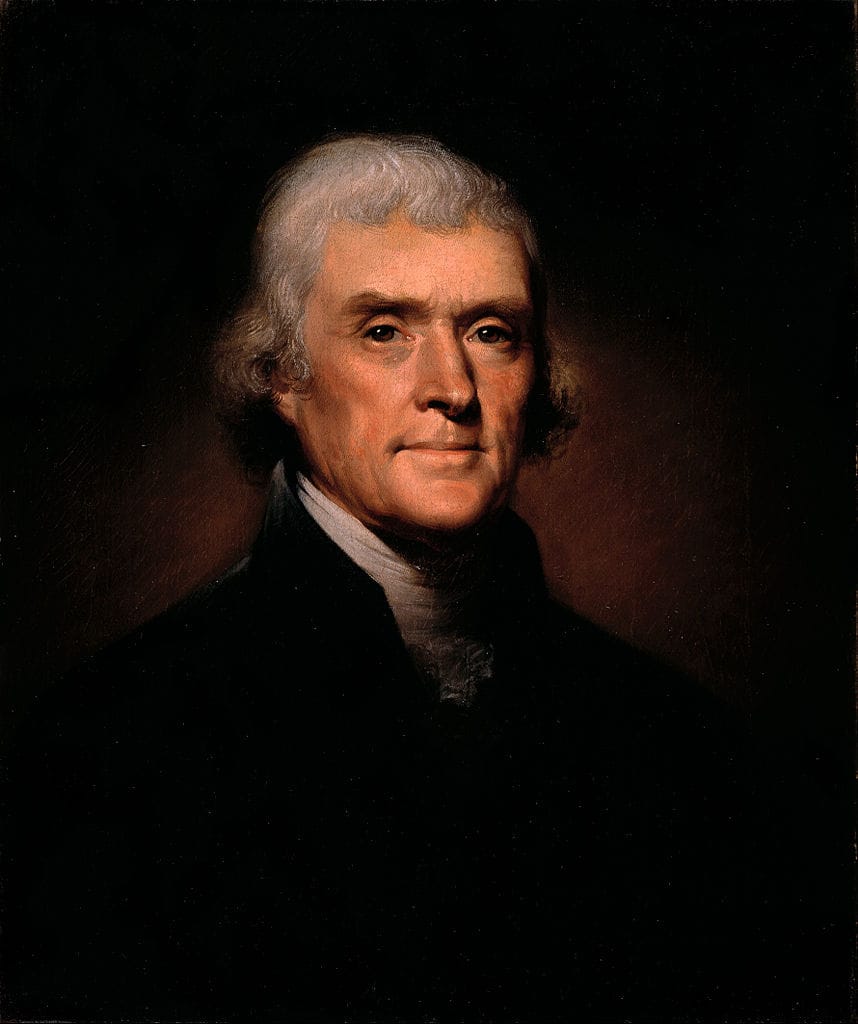separation of church and state

It is often said that the US Constitution erected a wall of separation between church and state. But these words do not appear in the text of the Constitution. Instead, the phrase comes from an 1802 letter by Thomas Jefferson to the Baptist Association of Danbury, Connecticut. The association had written the newly elected president expressing concern that their state constitution did not prohibit the government from establishing a state religion, and Baptists being a religious minority in the state at that time, feared for their religious liberty. Jefferson replied:
Believing with you that religion is a matter which lies solely between Man & his God, that he owes account to none other for his faith or his worship, that the legitimate powers of government reach actions only, & not opinions, I contemplate with sovereign reverence that act of the whole American people which declared that their legislature should “make no law respecting an establishment of religion, or prohibiting the free exercise thereof,” thus building a wall of separation between Church & State. Adhering to this expression of the supreme will of the nation in behalf of the rights of conscience, I shall see with sincere satisfaction the progress of those sentiments which tend to restore to man all his natural rights, convinced he has no natural right in opposition to his social duties.
Jefferson’s draft of the letter still exists, and, among other changes, he originally had written “a wall of eternal separation” but opted to leave out the word eternal in the final version.
The phrase entered into constitutional jurisprudence some seventy-six years later when it was used by Chief Justice Morrison Waite in the 1878 case of Reynolds v. United States, the first US Supreme Court case to address the scope of the First Amendment’s protection of religious liberty. George Reynolds, a Mormon, had been convicted of the crime of bigamy. The conviction was upheld by the Utah Territorial Supreme Court, and Reynolds appealed to the US Supreme Court on multiple grounds, including that the free exercise of religion clause of the First Amendment protected plural marriage. The Supreme Court upheld the conviction, declaring that marriage “while from its very nature a sacred obligation, is nevertheless, in most civilized nations, a civil contract, and usually regulated by law,” and therefore could be regulated by the state. Under the First Amendment, “Congress was deprived of all legislative power over mere opinion, but was left free to reach actions which were in violation of social duties or subversive of good order.”
While the phrase is Jefferson’s coinage, the idea of a separation between ecclesiastical and temporal power is not original to him. The political philosopher John Locke, upon whose ideas much of the US Constitution is based, wrote in A Letter Concerning Toleration, published in 1689:
It is not my Business to inquire here into the Original of the Power or Dignity of the Clergy. This only I say, That Whence-soever their Authority be sprung, since it is Ecclesiastical, it ought to be confined within the Bounds of the Church, nor can it in any manner be extended to Civil Affairs; because the Church it self is a thing absolutely separate and distinct from the Commonwealth. The Boundaries on both sides are fixed and immovable. He jumbles Heaven and Earth together, the things most remote and opposite, who mixes these two Societies; which are in their Original, End, Business, and in every thing, perfectly distinct, and infinitely different from each other. No man therefore, with whatsoever Ecclesiastical Office he be dignified, can deprive another man that is not of his Church and Faith, either of Liberty, or of any part of his Worldly Goods, upon the account of that difference between them in Religion. For whatsoever is not lawful to the whole Church, cannot, by any Ecclesiastical Right, become lawful to any of its Members.
And Jefferson’s contemporary, philosopher Denis Diderot, wrote in his Observations sur le Nakaz, commentary on a statement of legal principles issued by Catherine the Great of Russia, who was Diderot’s patron:
One question for discussion is whether the political institutions should be put under the sanction of religion. In the acts of sovereignty I do not like to include people who preach of the existence of a being superior to the sovereign, and who attribute to that being whatever pleases them. I do not like to make a matter of reason into one of fanaticism. I do not like to make a matter of conviction into one of faith. I do not like to give weight and consideration to those who speak in the name of the Almighty. Religion is a buttress which always ends up bringing the house down.
The distance between the throne and the altar can never be too great. In all times and places experience has shown the danger of the altar being next to the throne.
Diderot wisely opted not to send his observations to Catherine, in which he accused her of being a despot and tyrant, for when she finally read them after his death in 1784, she was furious and declared the observations to be nonsensical and incoherent.
Sources:
Diderot, Denis. “Observations sur le Nakaz.” In Diderot: Political Writings. John Hope Mason and Robert Wokler, eds. Cambridge, UK: Cambridge UP, 1992, 77–164 at 82–83.
Jefferson, Thomas. Letter to the Danbury Baptist Association, 1 January 1802. Library of Congress. Text (as sent). Text (draft). Images.
Locke, John. A Letter Concerning Toleration (c.1780). London: Awnsham Churchill, 1689, 18–19. Early English Books Online (EEBO).
Reynolds v. United States, 98 U.S. 145 (1878). Thomson Reuters Westlaw.
Image credit: Rembrandt Peale, 1800. White House Collection. Wikimedia Commons. Public domain image.